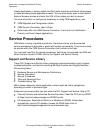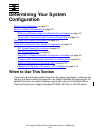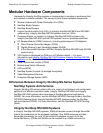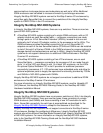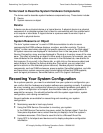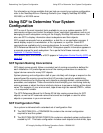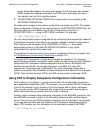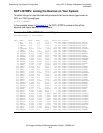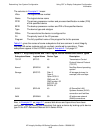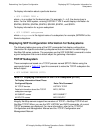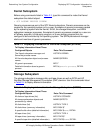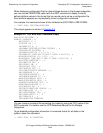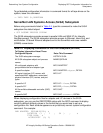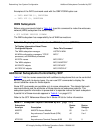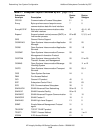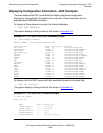
Determining Your System Configuration
HP Integrity NonStop NS-Series Operations Guide—529869-005
2-8
Using SCF to Display Subsystem Configuration
Information
The columns in Example 2-1 mean:
Table 2-1 gives the names of some subsystems that are common to most Integrity
NonStop NS-series systems and are routinely monitored by operations. These
subsystems appear in the LISTDEV output in Example 2-1 on page 2-7.
Also, in Example 2-1 on page 2-7, several disk drives and tape drives have been
configured. You can identify the subsystem that owns a device by looking up its device
type in the SCF Reference Manual for H-Series RVUs.
LDev The logical device number
Name The logical device name
PPID The primary processor number and process identification number (PIN)
of the specified device
BPID The backup processor number and PIN of the specified device
Type The device type and subtype
RSize The record size the device is configured for
Pri The priority level of the I/O process
Program The fully qualified name of the program file for the process
Table 2-1. Key Subsystems and Their Logical Device Names and Device Types
Subsystem Name Logical Name Device Type Description
TCP/IP $ZTCO 48 Transmission Control
Protocol/Internet Protocol
(TCP/IP)
Kernel $ZZKRN 66 NonStop Kernel operating
system
Storage $ZZSTO Disk: 3
Tape: 4
Open SCSI: 8
SMF pool: 25
SMF monitor: 52
$ZZSTO: 65
$ZSLM: 67
All storage devices; for
example, disk and tape
SLSA $ZZLAN 43 All ServerNet LAN
Systems Access (SLSA)
connection and facilities
WAN $ZZWAN 50 All wide area network
(WAN) connections



